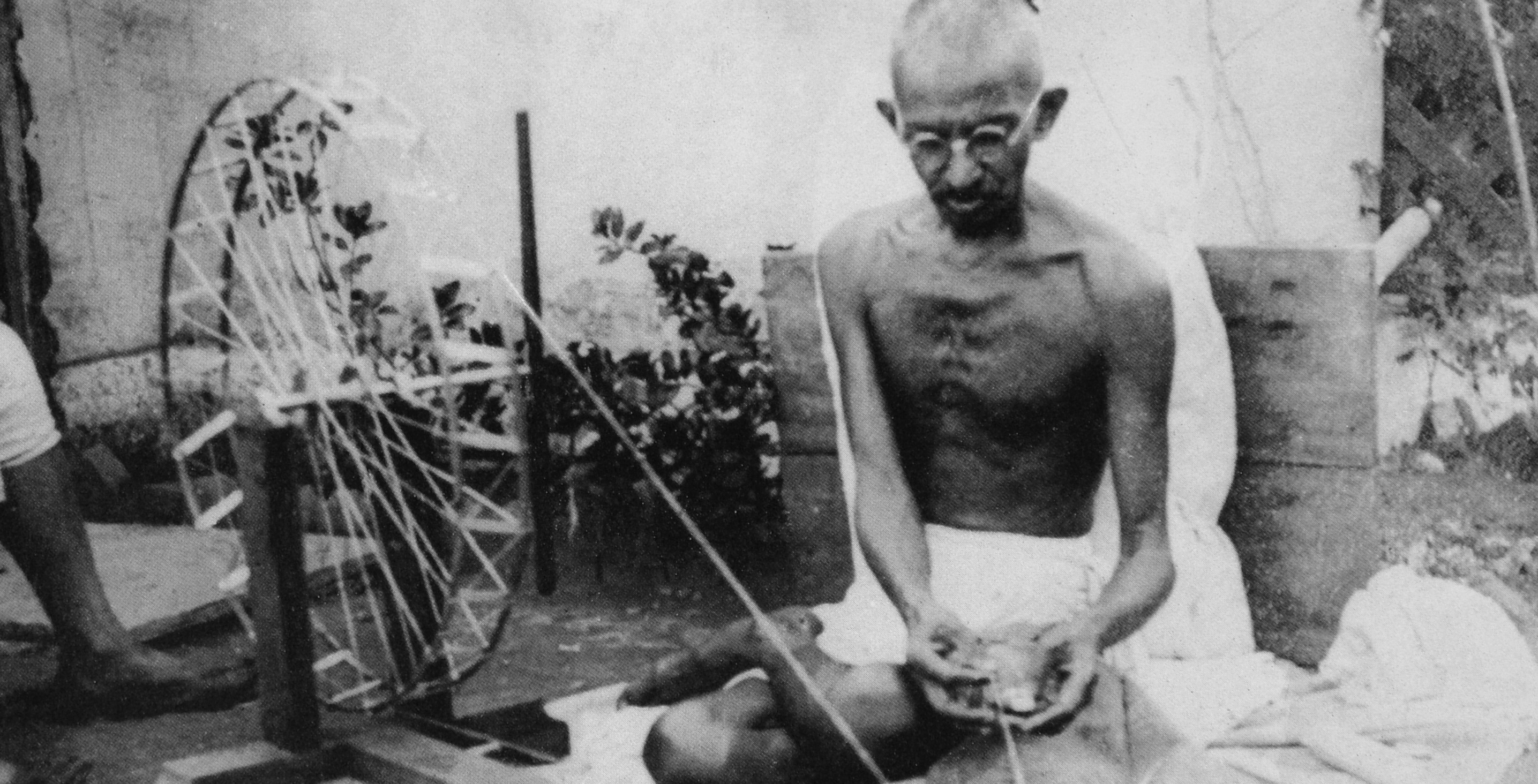By William Annett, in American Logo, Oct 31, 2014
When our selection committee heard that Glen Beck admired Mohandas K. Gandhi – that he doted on the dhoti — we began to think twice about the accuracy of history. Was Gandhi a Conservative, or at the very least a moderate capitalist? Apparently, the top-level strategists at Fox News, seeking, as always, notable adherents such as Gingrich and Krauthammer, have been known to dish into the mystique of the Mahatma.
Certainly Gandhi has never lacked for popularity. In his own country he is held in such superhuman adulation that when, a few years ago, a book suggested that in between long stretches of imposing celibacy on his long-suffering spouse, he’d had a thing going with a muscular German body-builder, the book was banned in Bombay, even before its release..
In any event, it turns out that the real Gandhi was even better than his reputation, although the reasons for his fame are badly in need of revision.
The story we get from the history already assembled is that of a scrawny little dude who looked like Ben Kingsley, wearing nothing but what Kipling described as “a twisted piece of rag,” and funny Grannie spectacles. He, it is told, apparently acquired enough moral force effortlessly and passively, to stop the British Empire dead in its tracks and win independence for the second most populous country in the world.
First of all, we should clarify what Gandhi DIDN’T DO. The truth, as to his reputed British Empire-bating, somewhat like Slim Pickens the rodeo clown hazing a bull, is that, after about 1915, Gandhi didn’t do squat. Or rather, about all he DID was squat – at a spinning wheel for entertainment, while for a day job he divided his time between attempting to deal with the social ills of untouchability and, as if that wasn’t enough, at the same time he was busy advocating small-scale village industry.
On both scores, he appears to have struck out. Or at the most, he achieved only moderate success. Most reformers, it seemed, at least in early 20th Century India, were hesitant to touch untouchables. Gandhi also had a shot at promoting an environmentally sustainable lifestyle for his people. Once again, no cigar. Granted, he didn’t have the advantages of being a Vice-president Gore 70 years later, not having been the vice-president of anything, although well up initially in the Congress Party. Nor was he, like Inconvenient Al, bankrolled by the Nobel Committee. (Oddly enough, he was unsuccessfully nominated for the Nobel Peace Prize ten times over.)
Instead, thanks to the efforts of his successor and disciple Jawaharlal Nehru, who strove for a Western industrial model, Gandhi’s early environmental awareness didn’t fly. Nor of course did his belief that India shouldn’t emulate all the other modern, environmentally myopic nations.
In other words, rather than opposing British domination in favor of India’s self-realization as a “modern independent state,” Gandhi, by the 1930s had retired from the Congress party to devote himself to the social and spiritual regeneration of his people. You know how far he got with that one.
Still, his moral force opposed and altered more than simple colonialism from without. His influence on the conscience of a sub-continent is still felt a century later. The confusion over his anti-British success arises partly from the coincidence that actually Great Britain did, later in 1945, play right into the Gandhi historians’ hands when the Brits packed their duffel bags, even though he shouldn’t have received the credit, as Ben Kingsley did in the movie.
The parting shot of Ruling Britannia left a vacuum that resulted in the unfortunate partitioning of Hindu-and-Muslim majority states in 1947. A year later, Gandhi was shot dead by an assassin.
It’s true of course that Gandhi returned from South Africa in 1915, where he had worked to support an imported Indian minority against racial discrimination by advocating moral suasion and non-violence. But he was just as vehemently opposed to industrial development as proposed by Western advocates as a domestic policy. Such a course was adopted by Jawaharlal (pronouncing that name always gives me lockjaw) Nehru, under whose leadership India chose to emulate Western-style industrial development.
The Gandhi model – the true one – is not unknown here and there in the post-America world of the 21st Century. Cottage industry is IN, baby. Like rock bands and farmers’ markets. In North Africa, in the Middle East, in Southeast Asia, the world is changing with growing conviction. It is not a simple overthrow of ancient patterns of monarchy and dictatorial rule. Its proliferation reaches into the modern version of the world’s worst evils. Combat avec tes defenseurs.
Seen in this modern context, Gandhi – if he were alive today – would I am sure be appreciated more for what he was than for what he wasn’t. Gandhi’s real story is subject to footnotes. Because what he really tried to achieve never happened, malheureusenent. Whether other individuals and similar contemporary movements succeed where he didn’t, history will let us know.
Mahatma and your spinning wheel, we salute you.
(printed with permission)





























